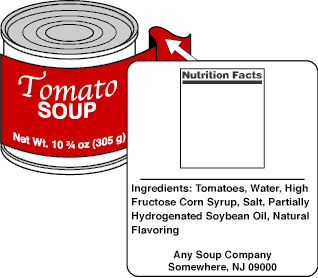How to Make Ingredient Labels
Whether your food business is large or small, you probably need to include an ingredient list on your packaging. While the nutrition fact label has an exemption for small businesses, the ingredient list does not.
Here, we'll show you how to make ingredient labels. We'll go over the main parts of an ingredient list and how to ensure you are compliant. If you want all the nitty gritty, you can read the FDA code itself.
How to List Ingredients on a Label

The most important part of an ingredient list is to list each ingredient in descending weight order. That means the most prevalent ingredient goes first, and the ingredient you use the least of in your recipe goes last. Remember that this is based on weight, not volume.
Ingredients should be listed using their "common" names. The example the FDA provides is to use "sugar" instead of "sucrose". You get the idea.
If any ingredient has it's own list of sub-ingredients, those sub-ingredients should be listed in parentheses. As an example, if your recipe uses packaged tomato sauce, you would list each ingredient, and then when tomato sauce comes up you'd list it something like "Tomato Sauce (Tomato Puree (Water, Tomato Paste), Water, Less than 2% of: Salt, Citric Acid, Spice, Tomato Fiber, Natural Flavor)".
While figuring out how to create an ingredient label can be tricky, ReciPal simplifies the process by putting your ingredients in descending weight order, showing you default ingredient statement naming conventions, and giving you the ability to customize as needed.
Exceptions
That's the basics. However, there are a few exceptions that allow you to alter your ingredient list.
Ingredients that are 2% or less of the whole recipe (by weight) do not have to be listed in descending weight order. They can be placed at the end of the ingredient list following a statement like "Contains 2% or less of ..." or "Less than 2% of ...".
Certain spices do not have to be declared by name, but can be listed in aggregate and declared simply as "spices". So, if your recipe has cinnamon, black pepper, and ginger you can list them all together as "spices".
Additions
Chemical preservatives must also be included along with the function they serve in the recipe, such as "preservative", "a mold inhibitor", "to promote color retention", and a few others. For example, ascorbic acid might be listed as "Ascorbic acid to promote color retention".
Formatting
There aren't nearly as many formatting rules for the ingredient list as there are for nutrition labels. It's generally just text laid out below the nutrition label, but there are a few rules to follow.
The font needs to be a certain size. The benchmark is that the lowercase letter "o" has to be at least 1/16th of an inch. It must also be legible and easy to read.
As far as label placement, the ingredient list should be on the same part of your label as the manufacturing (or packing or distribution) address. It can be either before or after the nutrition label if your package has one.
Final Thoughts
That's as much as you'll hopefully ever need to know about how to make an ingredient label. If you have any questions or unique cases, leave a comment below or email us!






